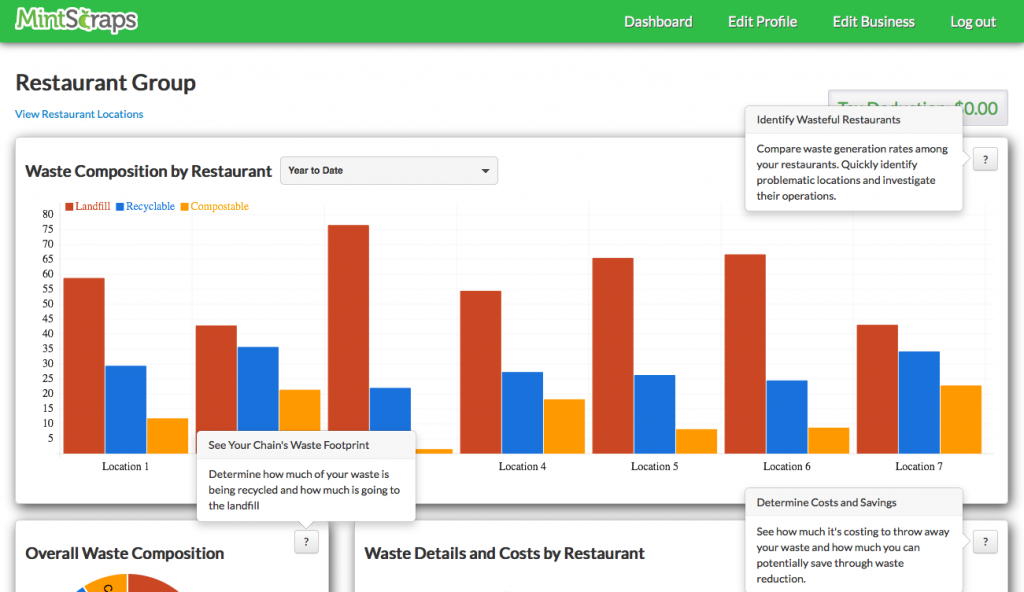It’s become common knowledge that 40% of food in America goes uneaten.
To get our food from farm to plates we utilize 50% of all U.S. land, 10% of the total U.S. energy budget and 80% of all the freshwater consumed in the U.S.,reports the NRDC. Needless to say, if we waste less food, we would also waste less land, energy, and freshwater: all precious and finite resources.
But somehow people don’t care enough about this issue. Food waste isn’t sexy, and it doesn’t seem as outrageous a problem or as hot a topic as I think it should be.
My friend, food waste guru, and author Jonathan Bloom, once pointed out to me that today in America, food is everywhere: it’s in our pharmacies, gas stations, Big Box retailers; it’s abundant and ubiquitous and it gives us the impression that it is not precious. As Bloom says, “these increased food options communicate our abundance in a somewhat harmful way. They contribute to the sense that we have so much food that we don’t need to treat it carefully.”
It’s common parlance for parents to say to their kids: “there are children starving in other parts of the world, eat your string beans.” And logically, that doesn’t really make sense, I can’t put my leftover, half eaten dinner in a to-go container and ship it overnight to a hungry kid.
In 2012 the NRDC’s report on food waste points out that reducing food waste in America by just 15 % would save enough food to feed more than 25 million people annually. In other words, the need to produce more and more food could be dramatically offset by reducing the amount that is wasted. Wasting less food would lead to major savings in the use of water, energy, pesticides and fertilizers, and would do wonders for the world’s food security, a new study by the UN’s Food and Agriculture Organization finds.
Any solutions to world hunger then, must start with a massive reduction in food waste.
Minimizing food waste is in a chef’s DNA. It affects food cost and the bottom line, and thus it’s in a chef and restaurant’s best interest not to let edible product go unused. But this doesn’t account for post-consumer plate waste, and frankly, there is always room for improvement even in the leanest of kitchens.
So what are we doing at B&BHG?
- Our restaurants are cook-to-order, so large batches of food are not prepared in advance of service, thus, rarely are large batches of food discarded at the end of a night.
- We are a chef-driven restaurant group, so our chefs are allowed creative freedom to create specials and manage the menu according to inventory- surplus or shortage.
- As a mostly- Italian restaurant group, we have more “European-sized” portions, and we offer the option for guests to take home leftovers.
But no matter how many precautions we take, food waste is inevitable. So when we do end up with food waste, our restaurants compost. But composting is only one stop short of the landfill. Ultimately, food goes uneaten. So our restaurants have taken a few more aggressive steps.
Before throwing away any pre-consumer food waste (resulting from overproduction, expired items, trimmings, etc.) our staff places food on a Lean Path scale and records critical data about each transaction, including the food type, weight, estimated value, reason for disposal, and more. From their cloud-based analytics platform, we can instantly view comprehensive waste data and insights. We worked with Lean Path for 90 days at two of our restaurants. Today, we’re working with Lean Path to create a smaller model for cook-to-order restaurants so we can better analyze our consumption.
MintScraps is another cloud-based platform but it starts with a different dataset: trash, recycling and compost bags picked up each night. MintScraps creates real-time charts and graphs that allow us to spot trends and identify inefficiencies in our operations. We can compare waste generation across each of our locations and identify aberrations. Additionally, through MintScraps Marketplace, our restaurants can post their leftover food for pickup by local food banks, which can also result in tax deductions.
So what’s the takeaway?
Numerous experts have proclaimed the need to double the world’s food supply in the next 40 years to feed a growing population with changing dietary demands. However, because of food waste, doubling the food supply actually will require tripling production from fewer resources. For this reason it’s even more urgent that we get our food waste problem under control.
Instead of teaching our children to feel guilty after they don’t finish what’s on their plates (they are children after all, I’m an adult and sometimes my eyes are still bigger than my stomach) – we should reverse the damage that has been done and teach them how truly precious food is. Show them the 3 minute video by artist and farmer Matthew Moore that brought me to tears – that squash takes 55 days to grow.
Teach them the value of what they are putting in their mouth, not the idea that they are taking it out of someone else’s.
Source: http://goo.gl/U9IJzl

Aucun commentaire:
Enregistrer un commentaire